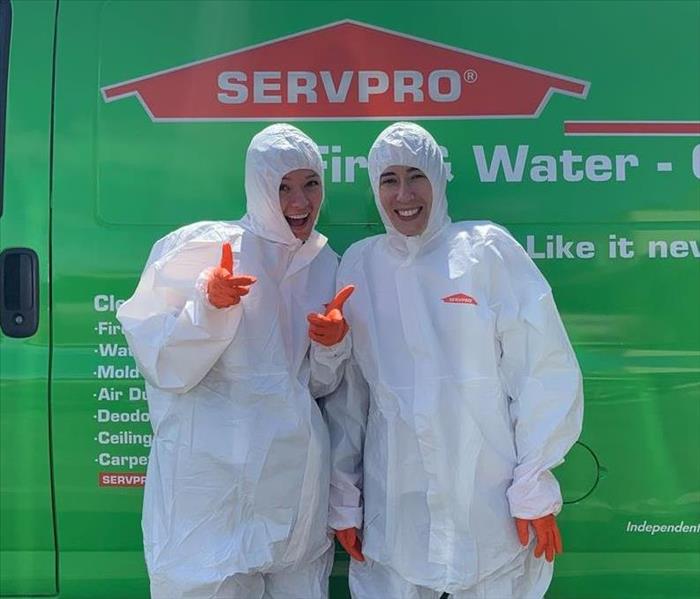Flatten the curve - COVID19.
3/27/2020 (Permalink)
 We are trained and excellent at what we do. Let us help you, your family and community by becoming PROactive against this COVID19.
We are trained and excellent at what we do. Let us help you, your family and community by becoming PROactive against this COVID19.
Cleaning and disinfecting are part of a broad approach to preventing infectious diseases.
Exposure to biological and chemical contaminants can pose serious health consequences. A failure to properly remove such substances can contribute to unhealthy and dangerous environments. SERVPRO of Lee & South Chatham Counties is trained to safely remove bio hazards and dispose of them properly in accordance with OSHA and health regulations.
1. Know the difference between cleaning, disinfecting, and sanitizing
Cleaning removes germs, dirt, and impurities from surfaces or objects. Cleaning works by using soap (or detergent) and water to physically remove germs from surfaces. This process does not necessarily kill germs, but by removing them, it lowers their numbers and the risk of spreading infection.
Disinfecting kills germs on surfaces or objects. Disinfecting works by using chemicals to kill germs on surfaces or objects. This process does not necessarily clean dirty surfaces or remove germs, but by killing germs on a surface after cleaning, it can further lower the risk of spreading infection.
Sanitizing lowers the number of germs on surfaces or objects to a safe level, as judged by public health standards or requirements. This process works by either cleaning or disinfecting surfaces or objects to lower the risk of spreading infection.
2. Clean and disinfect surfaces and objects that are touched often
Typically, this means daily sanitizing surfaces and objects that are touched often, such as desks, countertops, doorknobs, computer keyboards, hands-on learning items, faucet handles, phones, and toys. Some schools may also require daily disinfecting these items.
Immediately clean surfaces and objects that are visibly soiled. If surfaces or objects are soiled with body fluids or blood, use gloves and other standard precautions to avoid coming into contact with the fluid. Remove the spill, and then clean and disinfect the surface.
Need Bio-hazard Cleanup Services?
Call Us Today
(919) 533-6776
3. Clean and disinfect correctly
Always follow label directions on cleaning products and disinfectants. Wash surfaces with a general household cleaner to remove germs. Rinse with water, and follow with an EPA-registered disinfectant to kill germs. Read the label to make sure it states that EPA has approved the product for effectiveness against whatever you are trying to clean.
If a surface is not visibly dirty, you can clean it with an EPA-registered product that both cleans (removes germs) and disinfects (kills germs) instead. Be sure to read the label directions carefully, as there may be a separate procedure for using the product as a cleaner or as a disinfectant. Disinfection usually requires the product to remain on the surface for a certain period of time.
Use disinfecting wipes on electronic items that are touched often, such as phones and computers. Pay close attention to the directions for using disinfecting wipes. It may be necessary to use more than one wipe to keep the surface wet for the stated length of contact time. Make sure that the electronics can withstand the use of liquids for cleaning and disinfecting.
4. Use products safely
Pay close attention to hazard warnings and directions on product labels. Cleaning products and disinfectants often call for the use of gloves or eye protection. For example, gloves should always be worn to protect your hands when working with bleach solutions.
Do not mix cleaners and disinfectants unless the labels indicate it is safe to do so. Combining certain products (such as chlorine bleach and ammonia cleaners) can result in serious injury or death.
5. Handle waste properly
Throw disposable items used to clean surfaces and items in the trash immediately after use. Avoid touching used tissues and other waste when emptying waste baskets. Wash your hands with soap and water after emptying waste baskets and touching used tissues and similar waste.






 24/7 Emergency Service
24/7 Emergency Service